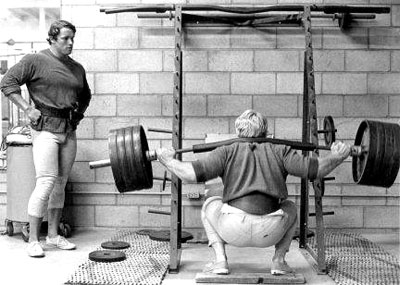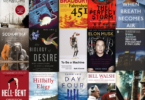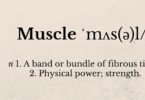20-rep squats – or ‘widowmakers’, as they’re sometimes known – are one of the more intense experiences you can have inside a gym. In case you’re unfamiliar, the protocol goes like this:
1. Load a weight that you should only be able to get for about 10 proper reps onto a barbell.
2. Take it out of the rack.
3. Don’t put it back until you’ve done 20 reps.
‘Resting’, albeit with the bar on your back, is fine, and necessary. If you’ve chosen the weight correctly, a good tempo to aim for might be a breath after every rep for the first 5-10, two or three breathes between reps 10-15, and then as many as it takes to get the last five up.
Also, it is going to feel awful. The trick is, the weight isn’t actually that heavy: if you’ve been realistic about your 10RM, you always ‘can’ get another rep. The problem is that you have to do the last few in a state of severe oxygen deprivation, when the bar is digging into your traps and the back of your throat tastes like blood.
They’re extremely worth doing. And they’re not even the worst thing I’ve ever done in the name of exercise.
When you first start training, workouts tends to slot into two categories: they’re either okay, or they suck. But, just as the Sami people of Northern Europe have 50 words for snow (the situation with Inuit languages is more complicated), training for a while allows more subtle gradations, based on physical sensations that are actually pretty different when you stop and think about it. A one-rep max deadlift, for instance, isn’t actually that unpleasant to do, even when you start to go heavy: the real strain comes mentally, in the minutes it takes you to gear up for it and the weeks of heavy workouts you do in preparation. At the other end of the spectrum, running a half marathon is basically one long session of pain management, running at the edge of your limits for a couple of hours while your lungs and legs take it in turns to protest. Those differences are obvious, but it gets much more nuanced: a 500m all-out row, for instance, feels completely different to a 2k, even though the difference in time is only about five minutes – the former is a burst of energy followed by the abrupt horror of trying to hang on, while the latter demands (arguably) more discipline in the face of mounting pain and temptation to stop. A set of cycle Tabatas sucks the life out of you in a completely different way from half a dozen 400m sprints, an a true all-out minute on the AirDyne is worse than almost anything else you can do in a gym. Even 20-rep squats can be sub-divided: a bodybuilder-style set, done strict and to tempo, will cause excruciating lactic acid buildup in your quads and hamstrings, while a widowmaker set (done heavier, but slower overall) is arguably worse on your lungs than your legs.
Why is this important? Two reasons:
Firstly: as I’ve mentioned before, doing more exercise is largely about finding a style of exercise you like. I, for instance, think I can probably lift pretty heavy because I’ll tolerate the sensations of lifting heavy – being crushed under a bar, smoked by one really nasty lift – much better than sustained cardio effort. I will haul a weight off the floor for a single rep that would make my bodybuilder friends walk away from the bar, but if they made me do their arms session for even one day I would very probably cry. I will destroy myself to beat my fellow human beings in a 400m sprint or a dip contest, but as soon as isometric holds are introduced in a yoga class, I’ll start looking for the door. None of us is worse or better: we’ve just found things we like (or don’t dislike) as much as some other things. I’ll say it again: it’s worth experimenting with different forms of exercise. There might be one you can suffer just hard enough to be amazing at.
Secondly: Every different difficult, painful thing you do is going to make you more prepared for other difficult, painful things. I can’t put this any better than Mark Rippetoe has, so I’ll just quote him:
“Intentionally placing yourself in the position of having to complete a task when you don’t know if you can is the single best way of preparing to be in that position unintentionally.”
But I’ll go Mr Rippetoe one further. Intentionally doing lots of different tasks that require different sorts of mental and physical strain is, I’d argue, the best way of preparing yourself for almost anything else. Writing a book or puts you under a different sort of strain from planning a wedding, and they’re both very different (in duration, intensity and mindset) from having a job interview. Experience of different types of stressors can help you deal with anything from one very brief but incredibly stressful experience (a speech at a conference, say) to a protracted, seemingly-endless project at work. Different sorts of exercise demand different approaches to planning, and different challenges demand a different mindset. And it all helps. So: take on a new challenge today, and realise that you’re laying the foundations for future success.
Homework: Watch this video of Ed Corney hitting some heavy-ass squats with Arnold (“Three more, no maddah what!”), and then go hit a 500m row, 400m sprint, 20RM, or whatever other physical challenge makes you feel the most queasy at the prospect. Times and weights in the comments, please.







Joel, what percent of 1RM do you recommend for the 20RM widowmaker set?